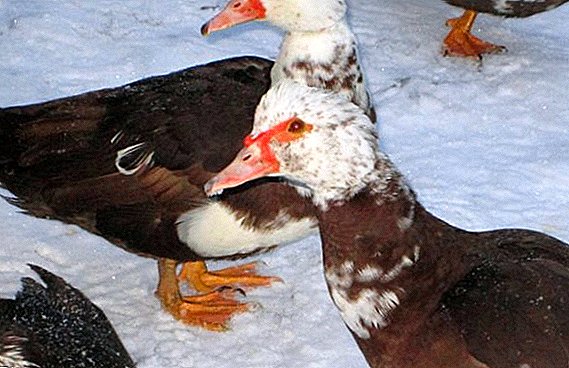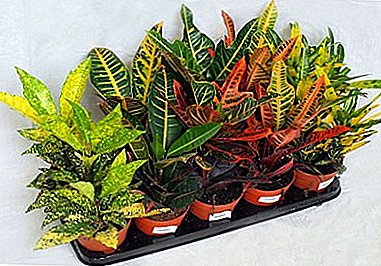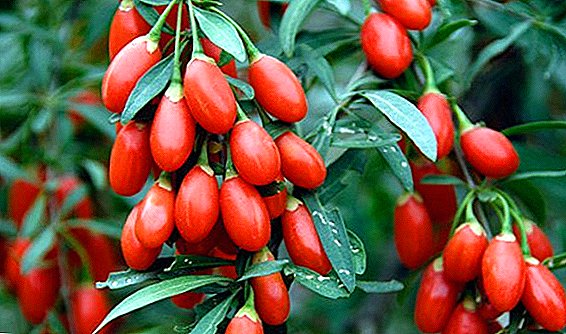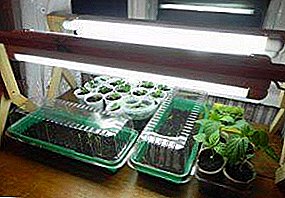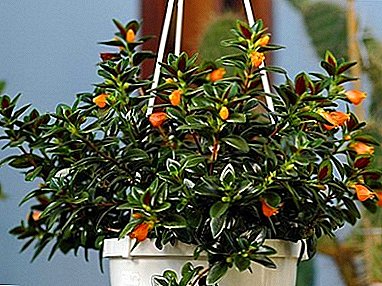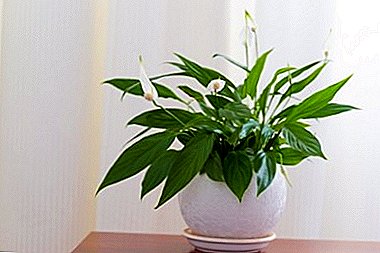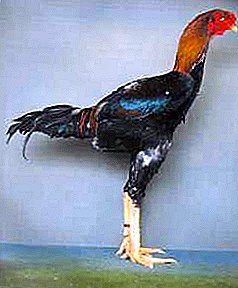
Almost all of those who have their own land, are engaged in the cultivation of agricultural animals. Many of them are interested in very exotic breeds of birds. In this article we will discuss the Malayan fighting chickens.
Malay warrior infrequently found in ordinary households. The historical homeland of this breed is India and, in particular, the Malay Archipelago. There is an assumption (unproved by the scientific world) that one of the ancestors of this species are the already extinct giant chickens, referred to in Latin as Gallus giganteus.
It is known for certain that the first representatives of this species came to Europe on board the British merchant ships in 1830. Bred from Asian fighting chickens, specially created to participate in the battles.
General description of the Malayan fighting breed
 The growth of the Malay warrior reaches even 90 (!) Centimeters.
The growth of the Malay warrior reaches even 90 (!) Centimeters.
A curved tail consisting of narrow feathers, slightly curving, a convex back, a long and wide neck, and a neck that is slightly bent back — all these signs combine to form a “bend line 3” that is one of the main distinguishing features of the breed.
The body of a typical individual is set vertically, bounded along the legs, neck and chest by a line, perpendicular to the ground.
The wings are convex, the shoulders are set extremely high, the skin on them seems thin, as it shines through. The chest is wide, the stomach is underdeveloped.
The head is small, flattened at the sides, the arches above the eyebrows are very developed, which gives the look some angry. The eyes are somewhat convex, with pupils of a mother-of-pearl shade, may be in the color spectrum between bright yellow and pearl-gold.
Powerful chest, wings protruding at the shoulders, back long and wide, going down to the tail; the tail itself is almost parallel to the back. Comb walnut shape, earrings are very weak, red lobes. Strong beak, thick and short, noticeably bent.
Yellow legs are not feathered, rather high. The lower leg is very muscular. In general, the shell is shaped like an egg. This breed has a brown-hazel or just brown, dense plumage.
 The Yokohama hen, also known as Phoenix, has a surprisingly long tail. It can reach a length of up to 16 meters.
The Yokohama hen, also known as Phoenix, has a surprisingly long tail. It can reach a length of up to 16 meters.The colors can be brown, porcelain, red-back, black, wheat and white. When the wheat color of the rooster, he has a brown-red-gold feathers on the mane, lower back and head.
Large outer feathers make up a wide transverse black strip with glitter. The outer part of the wing wings is brown-red, the tail, the front section of the neck, the belly and chest are black with a bright green sheen.
With the same type of color, the chicken has a brown-red head and mane, with black strokes along the feather bar. The legs, abdomen, tail, back, and tail of the female are yellow-red; the chest and in front of the neck are dull yellow, the wing triangle is cinnamon, with a reddish edge on the sides of the chest, and the feathers are light. Fly feathers and tail feathers are black with a brown edge.
 The rooster's 3-color coloration is the main brown-red color, but at the end of each feather there is a black-green spot, with another pearl spot inside it. On the cover on the wings passes two bands, forming white "pearls".
The rooster's 3-color coloration is the main brown-red color, but at the end of each feather there is a black-green spot, with another pearl spot inside it. On the cover on the wings passes two bands, forming white "pearls".
Brown color predominates in the feather feathers, but the tips are white, and the outer webs are black. The color of the tail braids and tail feathers is the same.
Pooh dark shade. Porcelain-colored chicken looks the same as the male, but in slightly lighter colors. With brown color, the rooster looks the same as with wheat, with the only difference that his loins and mane can be almost black, and his shoulders, lumbar plumage, back and mane are much darker than those of the "wheat" one.
The hen of this color has a brown-mahogany plumage with black stripes along the rod; the neck is darker than that of a wheat-colored chicken.
Content and cultivation
 Malay fighters are usually bred for participation in the battles.
Malay fighters are usually bred for participation in the battles.
Reaching adulthood, males are separated from the rest of the chickens and prepared for fights. This is called the "period of delays". The future "fighter" is cut with earrings and a comb. This makes the bird angry and quick-tempered. Then - a classic technique - a fight with a mirror.
The beak of the individual is strengthened, endurance appears. After preparation for real fights begins - for a start, you can train him on old roosters. The normal weight of a ready-to-fight individual is at least 3 kilos.
The breed of Malay fighting is not capricious, unpretentious, not sensitive to the conditions of detention. But the early start of incubation gives reason to keep these birds out of the damp and cold.
It is best to finally form the breeding stock by the beginning of December and give it exclusively protein in nature; dry fodder for layers and a mixture of different types of grain, 20 grams per individual, are best suited.
Feed the brood should be a special type of combined feed without additives, designed specifically for chickens; in no case should you allow excess protein in the organisms of small birds.
 Only once a week should they be given vitamins with drinking water. When chickens turn 2 weeks old, you need to give them nettle, lettuce, carrots and green onions as a supplement to the diet, but all this in strictly limited quantities.
Only once a week should they be given vitamins with drinking water. When chickens turn 2 weeks old, you need to give them nettle, lettuce, carrots and green onions as a supplement to the diet, but all this in strictly limited quantities.
Upon completion of the ringing process, a smooth transfer of the bird to a special feed with feed grain should be carried out for the young.but. This will provide the hens with the strength of the bones, the beak and the hardness of the feather.
Since young animals fledge very slowly, they should always have a dry, thick and clean litter in their housing and, on cold days, should also heat the air for the chicks.
In order for the young growth to grow faster and be healthy and strong, it is necessary to regularly walk it on green lawns. Place the birds should be regularly disinfected and cleaned. This is especially important for nests and perches.
Specifications
Adult, "in the juice", a rooster can weigh up to 5 kilograms. Chicken - up to 4 kg. The most mature chicken lays an average of only 100-110 eggs. An egg weighs an average of 57 grams, but occasionally it can reach seventy.
The egg shell has a delicate cream color. Up to 92% of adults and up to 87% of chicks survive without dying from disease or adverse weather conditions.
 Oryol chicken has an interesting appearance. They can be very large, but they are often bred for decorative purposes.
Oryol chicken has an interesting appearance. They can be very large, but they are often bred for decorative purposes.If you do not know how to eat wheat germ so that it brings maximum benefit, read this article.
Analogs
If you want to replace the Malay warrior with any other breed, the Oryol chicken has the closest relationship to it (despite its absolute external dissimilarity). But, for starters, you should decide exactly what qualities you need.
For example, the most "meat" are considered to be Brama and Cochinchin. The most prolific layers are considered to be Rhodonite-2, Leggorn and white Russian hens.
Chickens with balanced meat and egg characteristics - Rhode Island, Amrox and Orpington. Good fighters come out of Indian blacks, Azila and Kulangi. Well, the most popular decorative hens include Paduan, Wyandot dwarf, Sibrayt and curly.


